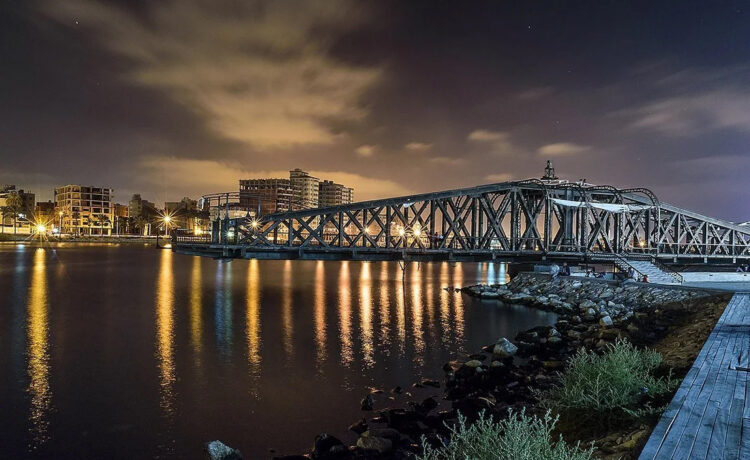Our regional politicians are not up-to-date with industry realities or choose to ignore them
As the development of Cyprus gasfields gets closer, so the claims about their importance in supplying Europe’s gas needs get louder, totally oblivious to whether Europe needs such gas, and, of course, how oil and gas companies make investment decisions and where the most likely markets for our gas are.
Apart from Qatar Energy, no other gas companies invest billions of dollars on major projects speculatively. They take ‘final investment decisions’ only when they secure long-term contracts, 20+ years, for the gas or the LNG they plan to produce.
The oil market is different. There is a global market and a global price. In addition, oil can be stored for long periods if markets become depressed. The same cannot be said for gas and LNG.
Sadly, our regional politicians are not up-to-date with these industry realities or choose to ignore them. They talk about sending East Med gas to Europe without paying attention to Europe’s needs.
EU’s gas needs
The EU has set very ambitious targets in its REPowerEU legislation to reduce natural gas consumption and, so far, it is on track to meet them.
In addition to ending dependence on Russian gas by 2027, implementation of REPowerEU would result in a 52 per cent reduction in gas utilisation by 2030 in comparison to 2019.
This is what discourages EU utilities from entering into long-term gas or LNG purchase contracts – the fear that beyond 2030 they may find themselves locked into contracts they cannot fulfil.
Following the end of the Russian gas transit agreement through Ukraine on December 31, 2024, the European Commission (EC) reconfirmed on January 2 that there are no security of supply concerns. Gas supplies have been secured through alternative routes and through withdrawals from storage. The European gas infrastructure, aligned with the REPowerEU objectives, has also been reinforced with significant new LNG import capacities since 2022. Europe does not need any new gas supplies.
In the EU in 2024 renewable power generation exceeded that from fossil fuels and it is still increasing. Renewables together with hydro and nuclear now provide over 70 per cent of EU’s electricity, with gas utilisation declining.
As the chart shows, according to Bruegel, EU’s gas consumption has been declining steadily since the pandemic. By 2024 it declined by about 25 per cent in comparison to the 2017-2021 average.
So far, the EU is on track to meet the REPowerEU target and likely exceed it.

Source: @Bruegel_org
Long-term LNG contracts already in place in 2024, alongside domestic production and capacity from existing gasfields in Norway and Algeria, would provide the EU with sufficient supply in 2040. Any further long-term gas supply contracts could lead to a gas oversupply in Europe. ACER is, in fact, warning that, if fully met, gas demand reductions outlined in REPowerEU could lead to a gas oversupply before 2030.
And there is possibly another potential challenge. According to the FT, the EU has started debating a “return to Russian gas as part of a Ukraine peace deal. Advocates say reopening pipelines could help settlement with Moscow and cut energy costs.” This appears to have support from German and Hungarian officials and other EU capitals.
Bloomberg warned about this possibility as early as December 2022: “As much as European leaders vow they won’t return to business-as-usual after the war in Ukraine, the inescapable realities of geography and markets can trump even the most determined policy makers.” If that happens, it will be at the expense of much-more expensive LNG imports.
Clearly, new gas projects developed in countries around Europe, with sales to the European market as their only option, could face significant financial risks. Such countries should expand their LNG export capacity so that they can diversify away from Europe to Asia where gas demand is expected to carry on growing all the way to 2050.
The future is regional
Currently known gas reserves in the East Med are not sufficient to support major new export-orientated projects. Fortunately, we have a massive market in the region that can absorb all this gas: Egypt. In the longer-term, and depending on geopolitical developments, this could also include Turkey.
Years of declining production have turned Egypt from an exporter to an importer of LNG to satisfy its ever-growing demand for gas for power generation, but also as feedstock for its petrochemical and fertiliser industries.
But this is an expensive option that cannot be considered to be a longer-term option. In 2025 alone, the country is expected to spend about $8billion on LNG imports, that could have a crippling effect on its beleaguered economy.
It has already turned to Israel, where new projects have been sanctioned to increase gas exports to Egypt from about 10bcm/yr now to 21bcm/yr by 2028.
Egypt is also in discussions with Cyprus to import gas from the 2.5tcf Kronos and 3.5tcf Aphrodite gasfields. Inter-governmental agreements to facilitate these projects are scheduled to be signed on 17 February by the countries’ presidents in Cairo. These should then clear the way for Eni and Chevron to agree field development plans with Cyprus ministry of energy.
Eni plans to follow-up on this later this year, with some of the gas likely to be liquefied at Damietta to service its existing LNG clients. However, there are still question-marks about Chevron. The immediate hold-up is resolution of the dispute with Israel’s Ishai Group, expected during the next three-months.
The big challenge, though, that weighs heavily in the minds of the oil and gas companies, is Egypt’s ability to maintain regular payments in the longer-term and willingness to pay market-prices for this gas. These are the main reasons why, so far, these companies have not been expediting new gas projects in the country.
The ExxonMobil factor
Following successful exploratory drilling in Egypt’s North Marakia block, ExxonMobil has just started drilling a promising target, Electra, in Cyprus block 5, to be followed by Pegasus in block 10.
Should Electra turn out to be as big as some reports claim, 30tcf, it would require a number of appraisal wells over 2-3 years before development options can be firmed up. Depending on the shape of the global LNG market in the next decade, discovery of even 10tcf or more could be sufficient to support a world-class LNG export project, targeting Asia. The most-likely location of such a project could be Vasilikos in Cyprus, but another option would be the now-unutilised LNG plants at Idku and Damietta in Egypt, with a combined capacity of 12,5million tonnes LNG per year.
But given ExxonMobil’s processes for planning and sanctioning new major projects, such a project is unlikely to become operational before the early 2030s. But let’s wait for the drilling results first.
Dr Charles Ellinas, @CharlesEllinas, is a councilor at the Atlantic Council













